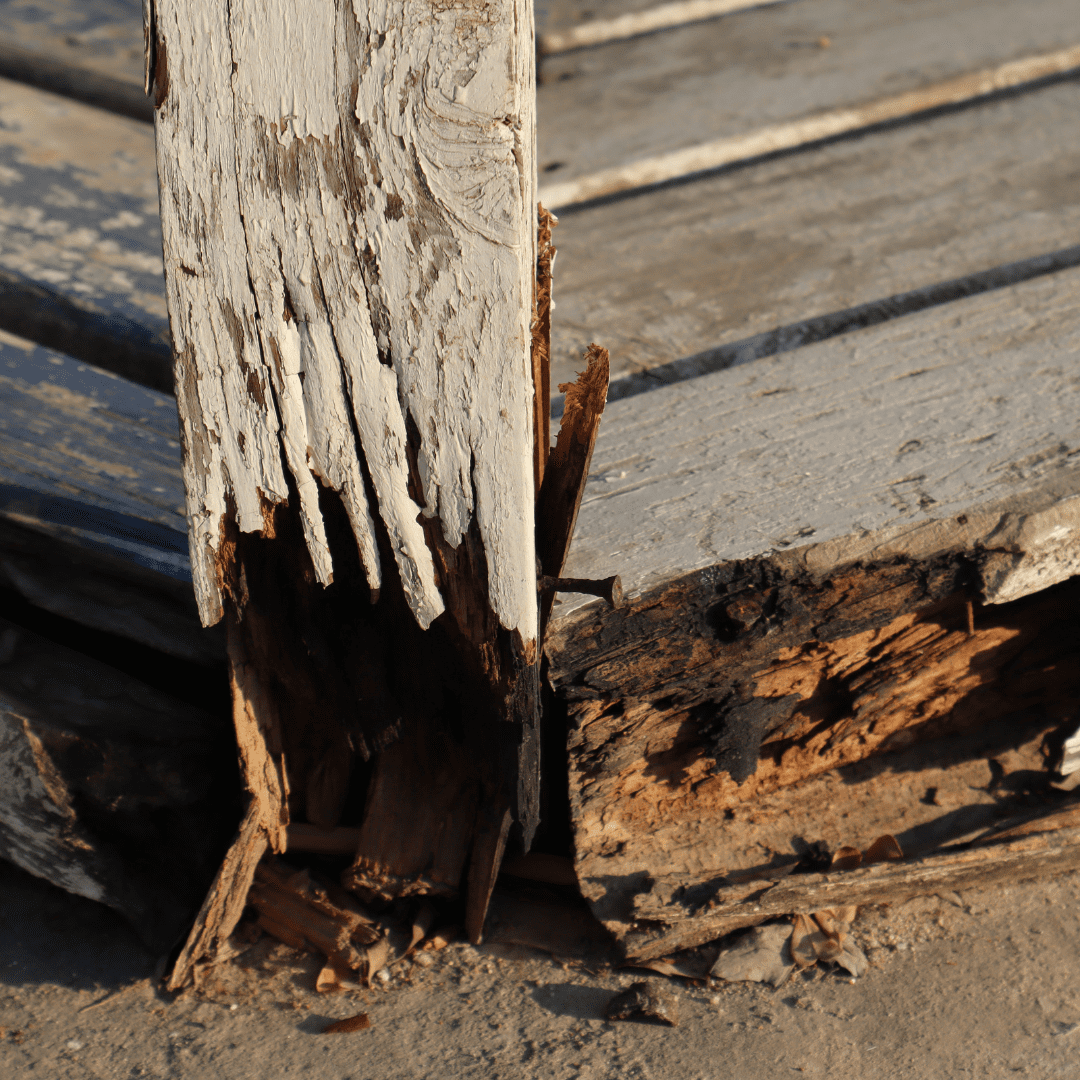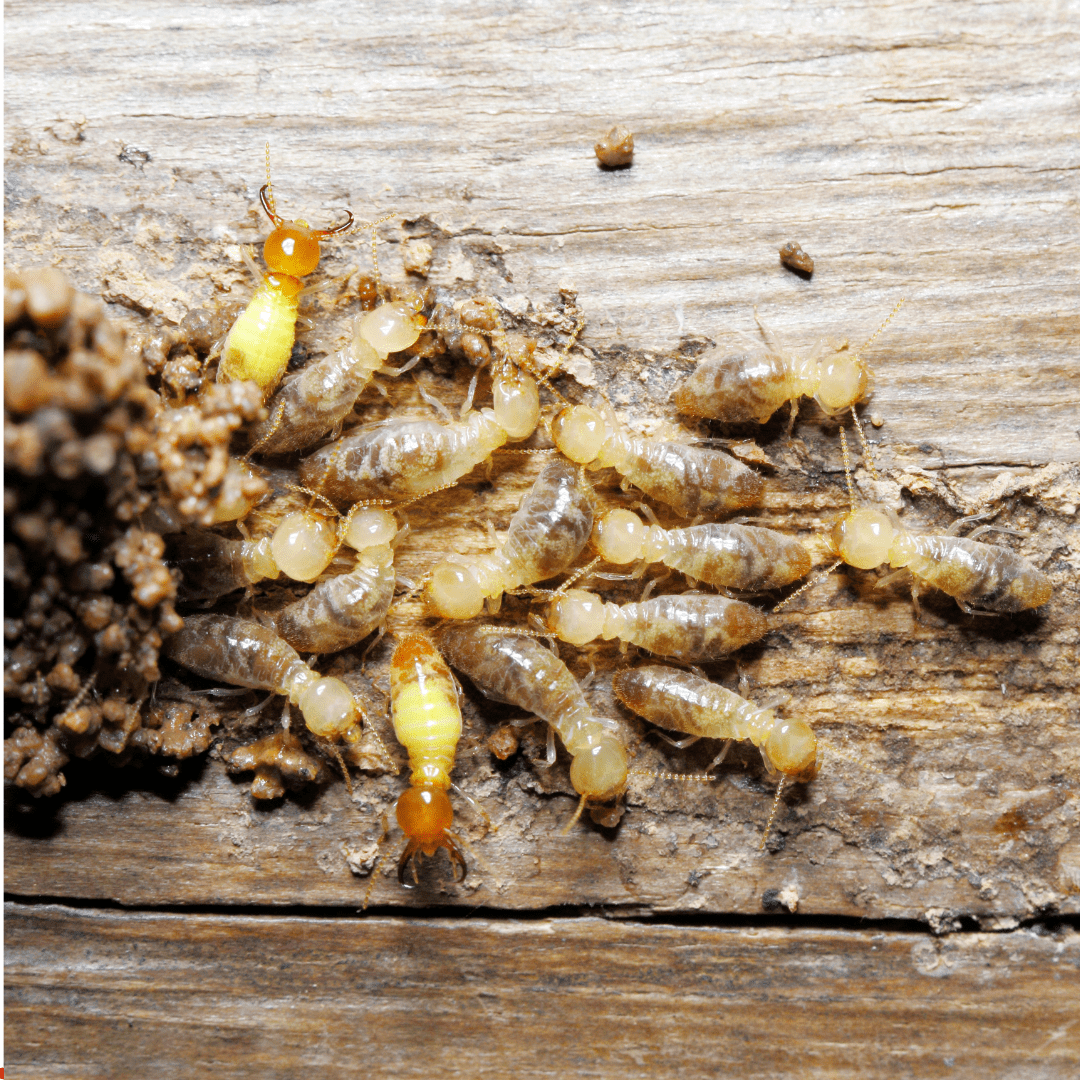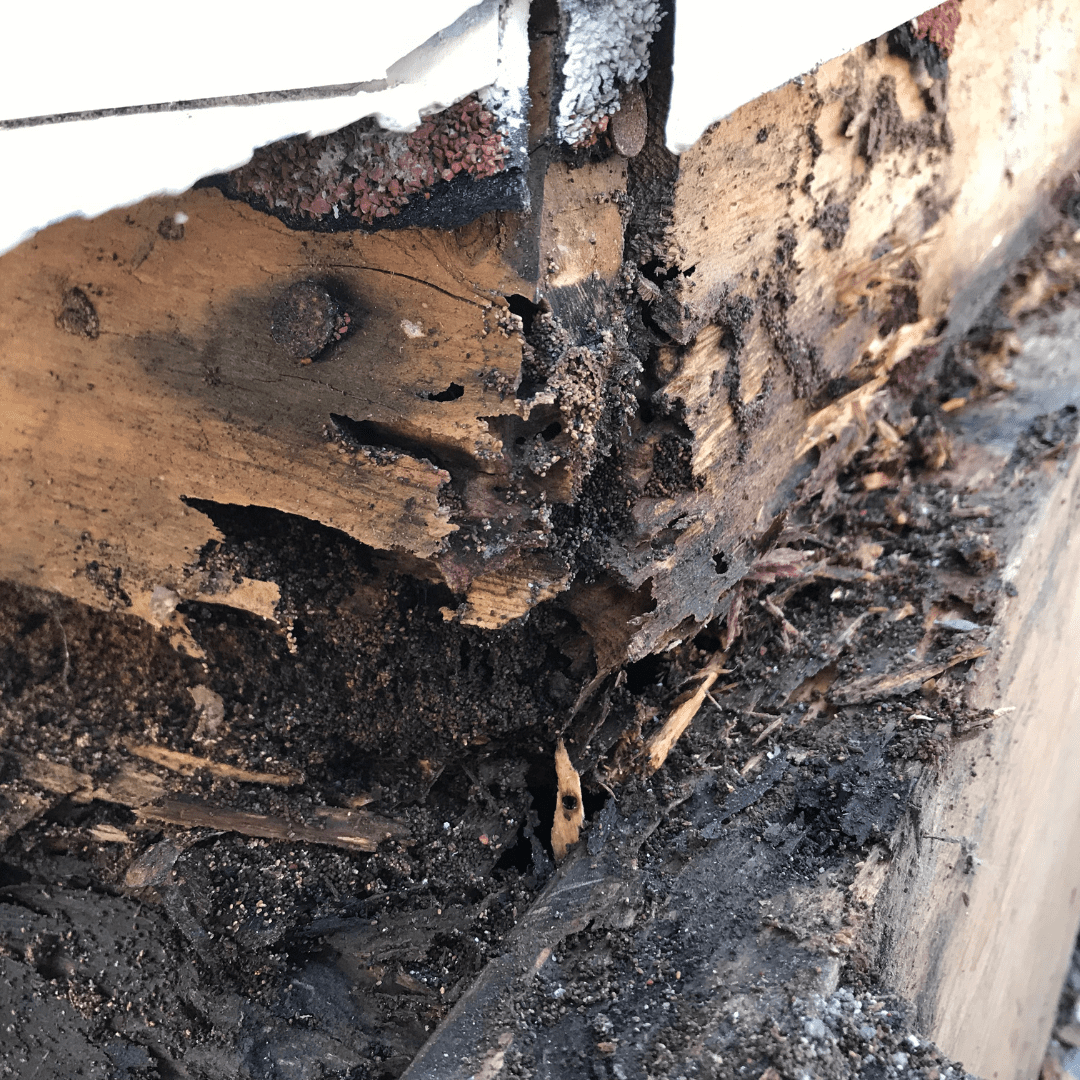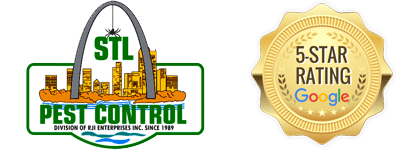


Determining whether wood damage is due to termites or rot is crucial for effective treatment and maintaining the integrity of a structure. Termite damage and wood rot are commonly misconstrued conditions that both deteriorate wood but stem from different causes. While termites are live insects that consume wood, wood rot is a form of decay resulting from fungal growth. These two issues differ not only in their causative agents but also in the means to detect and resolve them.
To differentiate between termite damage and wood rot, homeowners should look for unique signs that indicate the presence of one or the other. Termite damage typically features hollowed-out wood with maze-like patterns and can sometimes be detected by the presence of mud tubes, discarded wings from swarmers, or the termites themselves. On the other hand, wood rot is characterized by discoloration, a musty odor, and a tendency for the wood to crumble or become spongy, indicating decay. A comprehensive inspection by professionals may be required to identify the extent and specificity of the damage, leading to the most effective treatment and prevention strategies.
Key Takeaways
- Accurate diagnosis of wood damage is essential for proper treatment.
- Termite damage presents unique signs like hollow tunnels, whereas wood rot leads to discoloration and a spongy texture.
- Professional inspections are recommended for definitive identification and to guide treatment.
Identifying Termite Damage vs. Wood Rot
When inspecting damages to wooden structures, it is crucial to determine whether it’s the work of termites or the result of wood rot, as the treatment for each differs significantly.
Characteristics of Termite Damage
Subterranean Termites: These termites live underground in colonies, creating mud tubes to travel to food sources above ground. Signs of their presence include:
- Hollow-sounding wood: Tapping on wood that sounds hollow can indicate termite damage.
- Discarded wings: These are often found near windows or doors, as termites shed their wings when they swarm to start new colonies.
- Droppings (Frass): Drywood termites often leave behind frass, which looks like fine wood-colored droppings.
Drywood Termites: Unlike subterranean termites, they live within the wood they consume and do not require contact with the soil. Identifying features include:
- Tunnels: Wood consumed by drywood termites has maze-like tunnels.
- Smooth, clean galleries: The inside of infested wood is smooth and free of soil.
Signs of Wood Decay
Moisture: Wooden elements that have been exposed to moisture for a prolonged period are susceptible to wood decay. Wood rot can be identified by:
- Discoloration: Rotting wood can appear darker or have white or yellowish patches.
- Texture Changes: When pressed, decayed wood feels soft or spongy opposed to the hardness of healthy wood.
- Musty Odor: An earthy, musty smell is often apparent with rotting wood.
Key distinctions between termite damage and wood rot hinge on signs such as insect presence and the pattern of the damage. Effective treatment relies on accurate identification, guiding the choice between pest control measures and moisture mitigation strategies.
Conducting a Thorough Inspection
A comprehensive inspection is key to differentiating between termite damage and wood rot, focusing on typical habitation sites and infestation signs.
Inspecting Foundations and Walls
Inspect the property’s foundations and walls, as these areas are prone to termite activity, especially dampwood termites, which thrive in moisture-rich environments. Mud tubes, which are roughly pencil-sized tunnels near the foundation, are indicative of subterranean termite presence. It’s important to check for these signs:
- Look for visible cracks where termites could enter.
- Tap the wood structure — a hollow sound can signify damage.
- Search for discarded wings from swarmers as clear signs of a termite infestation.
Checking Doors, Windows, and Flooring
When inspecting doors, windows, and flooring, it’s crucial to differentiate between damage caused by termites and that caused by moisture leading to wood rot. Follow these steps:
- Examine the door and window frames for irregular or bubbled paint and wood that feels soft to the touch, a sign of moisture problems or termite activity.
- Check flooring for sponginess or give, which may point to either condition.
- Utilize a moisture meter to detect high levels of moisture conducive to both termites and fungal growth responsible for wood rot.
By systematically inspecting these critical areas, you can identify which problem you’re dealing with and take appropriate measures to protect the integrity of the property.
Understanding Termite Behavior and Life Cycle
Termites are eusocial insects with complex behaviors and life cycles that are integral to their ability to infest and damage wooden structures. Their societal structure and reproductive habits are key in understanding how to identify and manage infestations.
The Social Structure of Termite Colonies
Termite colonies operate with a caste system, consisting of workers, soldiers, a king, and a queen. Each group plays a specific role within the colony:
- Workers: The largest group, responsible for gathering food, maintaining the nest, and caring for the young.
- Soldiers: Protect the colony, with features adapted for defense such as larger mandibles.
- King and Queen: The reproductive pair. The queen is larger, with a swollen abdomen for egg-laying, while the king is her mate.
This division of labor ensures the colony’s efficiency and growth.
Reproduction and Swarm Habits
Reproduction in termite colonies centers around the queen, capable of laying thousands of eggs. Swarming usually occurs in warm weather when winged insects, also known as ‘alates,’ emerge from the colony to mate and establish new colonies.
- Winged Insects: Future kings and queens, these termites have wings for dispersal but shed them after mating.
- Swarm Habits: Swarms often signify a mature colony and might indicate a termite infestation nearby. After mating, the king and queen land, shed their wings, and establish a new colony.
Understanding these behaviors is crucial for identifying the presence and extent of a termite infestation, as well as for targeting treatment effectively.
Effective Treatments and Prevention Strategies
When dealing with termite damage or wood rot, understanding the treatment and prevention options available is crucial for maintaining the integrity of one’s property. Professional extermination methods can effectively eradicate termite infestations, while DIY and preventive measures are key to stopping issues before they start.
Professional Extermination Methods
Professional exterminators utilize a range of treatment options to combat termite problems. They often begin with an assessment to identify the extent of the infestation and the type of termites present. Common professional termite treatment methods include:
- Soil Treatment: Chemicals are applied to the soil around the property, creating a barrier that termites cannot cross.
- Bait Systems: Bait stations are strategically placed to attract termites, which then carry the toxin back to their colony.
It’s important for a professional exterminator to tailor the treatment to the species of termites and the environment.
DIY and Preventive Measures
Prevention is the most effective strategy in battling termite problems and wood rot. Here are some DIY measures and preventive tips one can implement:
- Reduce Moisture: Ensure proper drainage away from the property’s foundation and address any plumbing leaks promptly.
- Clear Wood Debris: Remove any potential food sources, such as firewood, mulch, or decaying wood, from around the home’s perimeter.
- Regular Inspections: Conduct periodic checks of the property to catch any signs of termites or wood rot early.
Implementing these preventive steps alongside routine professional inspections can greatly reduce the risk of termite damage and wood rot.
Recognizing and Addressing Structural Impacts
It is crucial to accurately identify whether structural damage in wooden structures is a result of termite activity or wood rot to determine the effective approach for repair. Trained technicians are typically needed for assessing the full extent of the damage and recommending appropriate repairs.
Assessing Structural Damage
Termite Activity: Termites typically consume wood from the inside out, which can lead to a hollow sound when tapped. Indicators of termite presence include:
- Hollow-sounding or papery wood upon tapping.
- Visible tunnels in wood, often aligned with the wood grain.
Wood Rot: Wood affected by rot often appears more visibly damaged than wood impacted by termites. Signs of wood rot include:
- Discoloration or a spongy texture.
- Wood that easily crumbles or breaks apart.
Repair and Restoration Options
For Termite Damage:
- Eliminate the Infestation: The first step is to eradicate the termites to prevent further structural damage.
- Structural Repairs: Repair the damaged structural components. This may involve:
- Reinforcing or replacing damaged wood.
- Treating adjacent areas to prevent future infestations.
For Wood Rot:
- Remove the Source of Moisture: Address leaks or moisture issues that contribute to the rot.
- Restoration: Replace or treat the rotted wood. Structural restoration includes:
- Using treated wood that resists moisture.
- Ensuring proper ventilation in the repaired area.
Frequently Asked Questions
Identifying and addressing wood damage is crucial for maintaining the structural integrity of any wooden structures. This section answers commonly asked questions about discerning between termite damage and wood rot.
What are the clear signs of termite damage in wooden structures?
Termites leave a distinct pattern in wood, often creating honeycomb-like structures inside. Affected areas may also show the presence of mud tubes or tunnels, which termites use for protection and as pathways.
How can one distinguish between termite damage and wood rot upon inspection?
One can distinguish these by examining the texture and condition of the wood. Termite damage typically reveals a network of voids with remnants of mud tubes or fecal pellets. In contrast, wood rot usually results in discolored, soft, or spongy wood, often crumbling into cube-shaped pieces.
What are the characteristics of wood compromised by rot?
Wood affected by rot becomes soft and may feel spongy. It can appear discolored and will break apart in a distinct, cubical fracture pattern due to the breakdown of wood fibers by fungal growth.
How does termite damage manifest visually in affected wood?
Visually, termite damage presents as carved out tunnels and may cause the surface of wood to blister or swell, especially if termites are close to the wood surface. The structural damage is not always immediately visible, but such deformities are tell-tale signs.
What steps should be taken to treat wood that has been damaged by termites?
Treatment of termite-damaged wood typically involves removing the infested wood, using pesticides to exterminate the termite colony, and repairing or replacing structural components as necessary. Professional assessment and treatment are often required for effective management.
In what ways does water contribute to wood rot, and how can it be identified?
Water plays a key role in wood rot by providing the necessary moisture for fungal spores to grow and proliferate. Signs of water-induced rot include darkened areas or patches where the wood is visibly moist, leading to a soft texture and brittleness.
Why Call STL Pest Control for Service?
When faced with the challenge of determining whether your wood damage is due to termites or rot, the expertise and experience of a professional pest control service are invaluable. Here’s why STL Pest Control is your best choice:
Expertise in Pest Identification
Our team at STL Pest Control has extensive training and experience in identifying different types of wood damage. We can accurately determine whether your issue is caused by termites, wood rot, or another factor. This precise identification is crucial for selecting the appropriate treatment and ensuring the problem is effectively resolved.
Comprehensive Inspections
We provide thorough inspections of your property, focusing on common areas of infestation and damage. Our detailed approach ensures that no sign of termite activity or wood rot goes unnoticed, allowing for a complete assessment of the situation.
Customized Treatment Plans
Based on our findings, we develop customized treatment plans tailored to your specific needs. Whether it’s termite eradication, moisture control, or repairing wood damage, STL Pest Control offers solutions that address the root cause of the problem, not just the symptoms.
Preventative Measures
Beyond treating current infestations, we emphasize preventative measures to protect your home from future damage. Our services include advising on moisture management, structural repairs, and routine inspections to keep your property safe and sound.
Trusted Local Service
As a locally owned and operated company in St. Louis, STL Pest Control understands the unique challenges homeowners in our area face. Our commitment to our community drives us to provide top-notch service and ensure customer satisfaction with every job.
Proven Results
Our track record speaks for itself. Countless homeowners in St. Louis have trusted STL Pest Control to safeguard their homes from termites and wood rot. We take pride in our proven results and the peace of mind we bring to our clients.
Contact Us Today
Don’t wait until the damage becomes severe. Contact STL Pest Control today to schedule an inspection and take the first step towards protecting your home from termites and wood rot. Our friendly and knowledgeable team is ready to help you maintain the integrity and value of your property.

